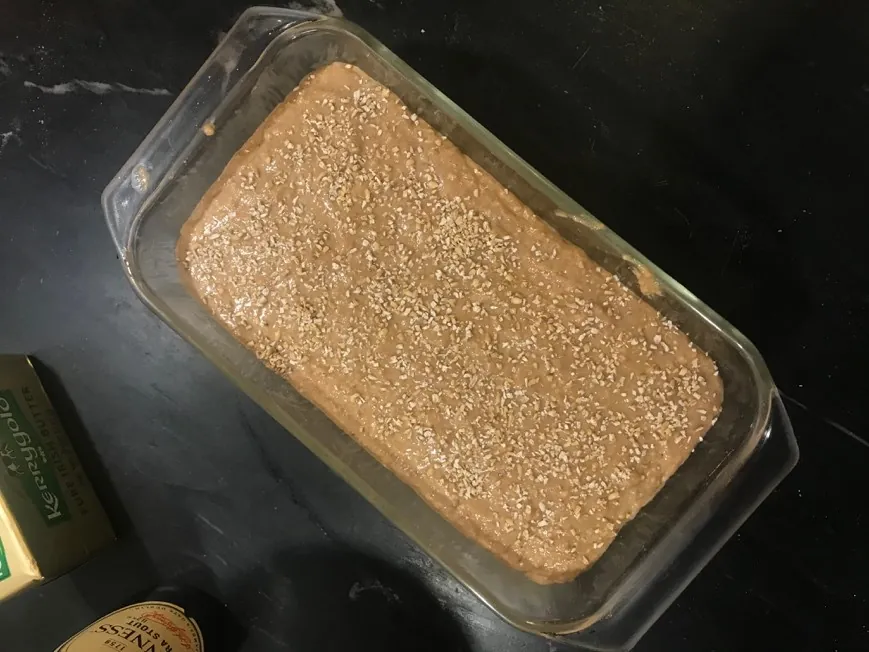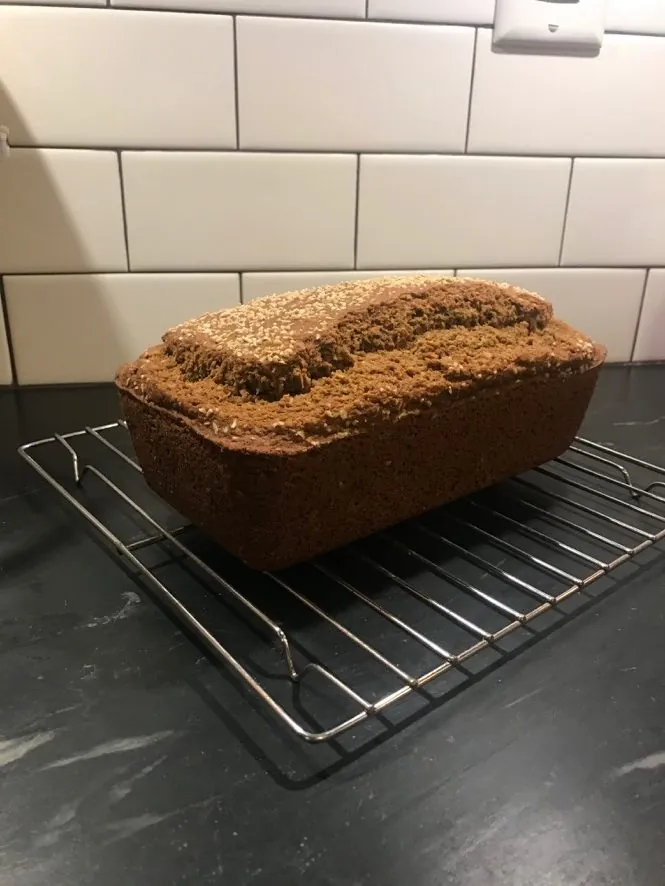Blog
Irish Brown Bread, Perfection In Every Bite
By Sarah Beleski a recent ASU Nutrition Student
Last march, I had the opportunity to travel to Ireland with two of my friends. It was the most spontaneous trip I had ever taken and definitely the most beautiful one. My friends already had their Ireland trip planned out and I decided to go with them on the night before we left! We spent time in Dublin, Howth, and then drove to the west coast to see the Cliffs of Moher and stay in County Clare.
Everything about the trip was spontaneous for me, especially the food! I expected to eat a lot of hearty meals, especially with meat and potatoes. We definitely ate our fair share of hearty Irish food, but what I wasn’t expecting was the Irish brown bread. It was everywhere! Every restaurant, hotel, bed and breakfast, and pub offered this amazing Irish brown bread that I can’t describe as anything other than “perfection”.

They served this rich bread at the beginning of every meal and I can honestly say that I did not have one piece of it that left me disappointed. This new love for Irish brown bread had me thinking that I should try to recreate this bakery marvel myself. I was expecting to find a fairly difficult recipe because bread making can sometimes be a bit of a hard task to accomplish. However, this bread could not be any easier to make than if I had it shipped over from the Emerald Isle itself!
In my quest to find the perfect brown bread that I enjoyed in Ireland, I also found a lot of controversy about how to make it correctly. Some claimed incorporating yeast was the correct way, others used Guinness as the secret ingredient, and some swore by good old-fashioned baking soda.
No matter the leavening agent used in the recipe, the most important and main ingredient gives the bread its signature nutty flavor. Instead of using all-purpose flour, the bread recipe uses mostly stoneground whole-wheat flour. Whole-wheat flour was originally used in the recipe because of economical purposes. After the potato famine that swept through Ireland in the mid-1800s, poverty led many people to search for more economical food choices.
Wheat flour and baking soda were two options that were popular in rural Irish communities. The brown bread became a common staple because it also only required a few ingredients. It was the perfect food to combat the poverty that had ravaged Ireland.
So, how can you pay homage to the brilliant Irish people for creating this amazing bread? Try it out, yourself! Below are two recipes for Irish brown bread that vary slightly, but still hold the same main ingredients. I recreated the first recipe, adapted from Ina Garten, and includes traditional Guinness beer. If you prefer to make the bread without it, the second recipe offers an equally delicious option.
Irish Guinness Brown Bread (adapted from Ina Garten)
Ingredients:
- 1 cup quick-cooking oats (not instant), plus extra for topping
- 2 ¼ cups whole-wheat flour
- ¼ cup all-purpose flour
- ½ cup dark brown sugar, lightly packed
- 2 ¼ tsp baking soda
- 1 tsp baking powder
- 2 tsp kosher salt (I found it to be a little salty, so you could use only 1 tsp and it would be fine)
- 1 (11- to 12-ounce) bottle of Guinness extra stout beer (room temperature)
- 1 cup buttermilk (shaken)
- 5 tbsp unsalted butter (melted), plus extra for brushing the pan
- 1 tsp pure vanilla extract
- Salted butter (Irish butter is amazing with this bread)
Directions:
- Preheat oven to 450 degrees.
- In a large bowl, combine the oats, whole wheat flour, all-purpose flour, brown sugar, baking soda, and salt. In a separate bowl, whisk together the Guinness, buttermilk, melted butter, and vanilla extract.
- Make a well in the dry ingredients and pour the wet ingredients into the well.
- With your fingers, stir the batter from the middle of the bowl to the outside, until it’s well mixed. (It will resemble cake batter more than bread dough.)
- Brush a 9 x 5 x 2 ½ -inch loaf pan with melted butter.
- Pour the batter into the pan and sprinkle the top with oats.
- Put the bread in the oven and immediately turn the temperature down to 400 degrees.
- Bake for 45 minutes, until a toothpick comes out clean.
- Turn the bread out onto a baking rack and allow to cool completely.
- Slice and serve with a good, Irish salted butter.



Irish Brown Bread (from Taste Cooking)
Ingredients:
- 2 ½ cups stone ground whole-wheat flour
- 1 ½ cups fine whole-wheat flour
- 1 tbsp brown sugar
- 2 tbsp wheat germ
- 1 pinch kosher salt
- 1 tsp baking soda
- 4 tbsp salted butter
- 15 ounces buttermilk
- 1 large egg
- 1 tbsp oats for topping
Directions:
- Preheat oven to 400 degrees.
- Add all dry ingredients to a large bowl and mix with a wooden spoon.
- On the stovetop, melt the butter, then pour into a small bowl with the buttermilk.
- Add egg to buttermilk and butter mixture and whisk together.
- Add the wet ingredients to the dry ingredients and mix with a wooden spoon (batter should be wet, but firm).
- Pour the batter into a greased loaf pan and sprinkle oats over the top.
- Bake for 50 minutes and cool on a wire rack after it is done.
Looking for some new recipes to try out? Check out the Recipe Section of our website. How about some fresh produce that the whole family will enjoy? Check out the local Farmers Markets near you.
References
Irish Guinness Brown Bread. (2016). barefoot contessa. Retrieved from https://barefootcontessa.com/recipes/irish-guinness-brown-bread.
Clarke, J.C. (2017). Brown Bread Is the Spine of Ireland. Taste. Retrieved from https://www.tastecooking.com/brown-bread-spine-ireland/.
(2018). A Little History of Irish Bread Just in Time for St. Patrick’s Day. Good Food Ireland. Retrieved from https://www.goodfoodireland.ie/blog/little-history- irish-bread-just-time-st-patricks-day.
















